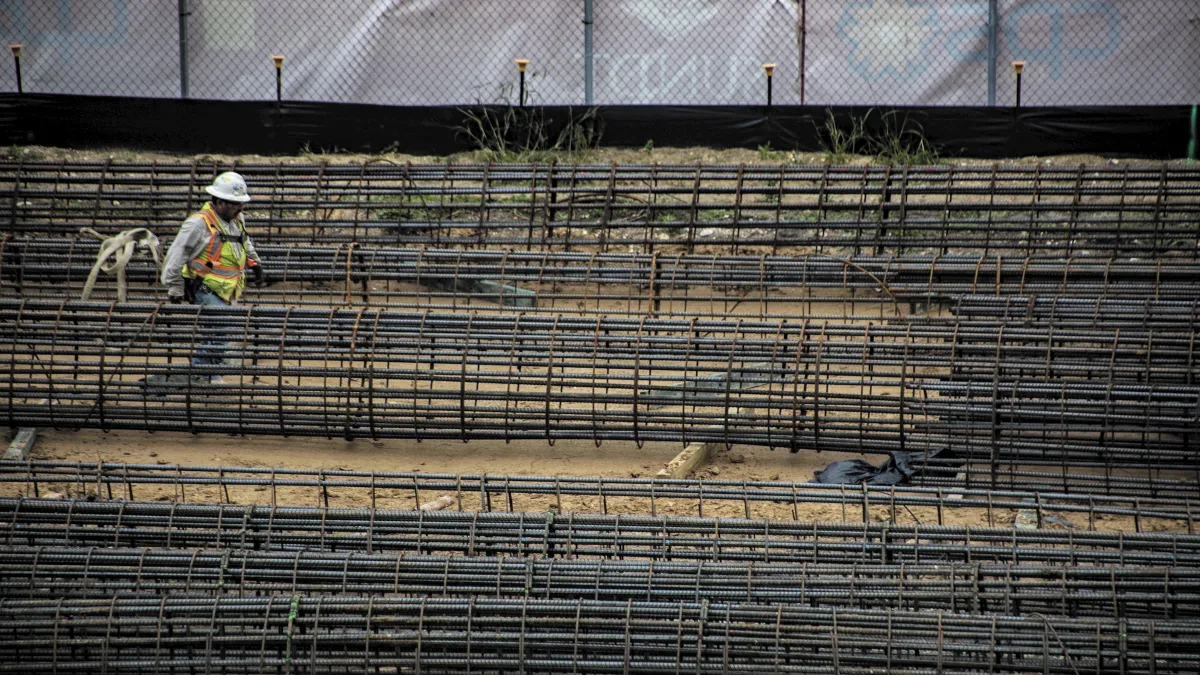Dive Brief:
- Shortages of key materials including steel and PVC pipes continue to hamstring the construction industry, pushing up prices and delaying deliveries, according to August data from Gilbane Building Company.
- Prices of adhesives, drywall, electrical equipment, steel and PVC pipe fixtures all rose, with inventories of those materials contracting and deliveries delayed, the construction firm reported.
- Lumber, which saw a meteoric rise earlier this year, was one of few materials to see a price decline, according to Gilbane. But even that may not last for long, as lumber futures have soared nearly 40% since mid-August.
Dive Insight:
Mounting shortages and rising costs have left contractors in some cases delaying projects or using substitute materials when possible.
Steel, roofing and insulation materials are some of the most difficult products to get right now, said Ken Simonson, chief economist at the Associated General Contractors of America. Bar joists, which are used to frame roofs, can have lead times of anywhere from 10 months to 14 months.
Costs have also soared, with the index for steel mill products rising 123% YoY in August, according to the Bureau of Labor Statistics' Producer Price Index. Copper and brass mill shapes jumped 45.3% YoY, while plastic construction products saw increases of just under 30% YoY.
Prices of construction materials soar
"It's a real strain to get the full project done and staying within budget," Simonson said.
In some cases, contractors are substituting materials to cut down on project times. Customized beams can be used in place of bar joists, for example, though they're heavier and often require a redesign of other structural elements.
"While the contractor may save time in substituting materials, they have to get the project manager to agree to a redesign and a higher expense, which may not always happen," said Simonson.
In many cases, it's difficult to even find potential substitutes. Recent extreme weather events have compounded supply shortages that began with the pandemic, dealing a devastating blow to the construction industry, Simonson said. The February winter storm in Texas shut down plants that supply raw materials for construction plastics, while Hurricane Ida led to weekslong power shutdowns at chlor-alkali plants that make key ingredients used in PVC pipes.
National nonresidential construction spending fell 0.4% in August, with spending declining on a monthly basis in 10 of the 16 nonresidential subcategories, according to U.S. Census Bureau data analysis from the Associated Builders and Contractors. Rising materials costs and a shortage of labor are "inducing more project owners to postpone work," Anirban Basu, ABC's chief economist, said in a statement.
With less demand for nonresidential projects, contractors are largely absorbing the higher costs. Input costs to construction rose 28% from April 2020 to August 2021, according to an emailed analysis of BLS data from the Associated General Contractors of America. Meanwhile, bid prices only rose 5% over the same period.
Various shortages and other supply chain bottlenecks are expected to last into next year, if not into 2023, said Simonson.
"I think it will be a very long time before we see things get back to whatever normal was before this," he said.
This story was first published in our weekly newsletter, Supply Chain Dive: Procurement. Sign up here.














